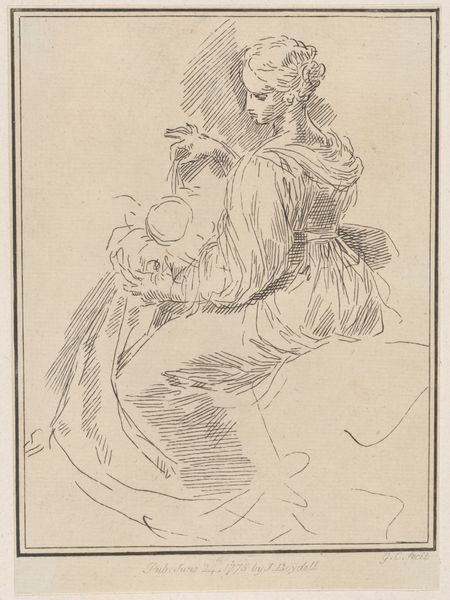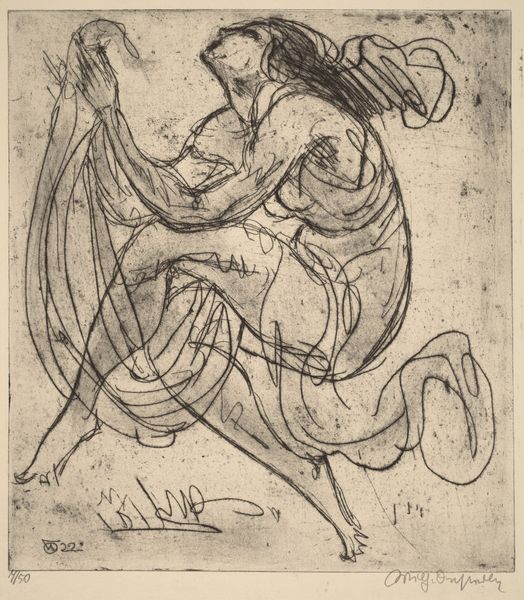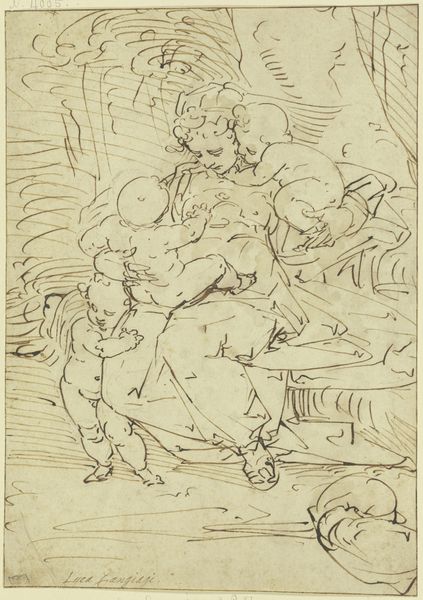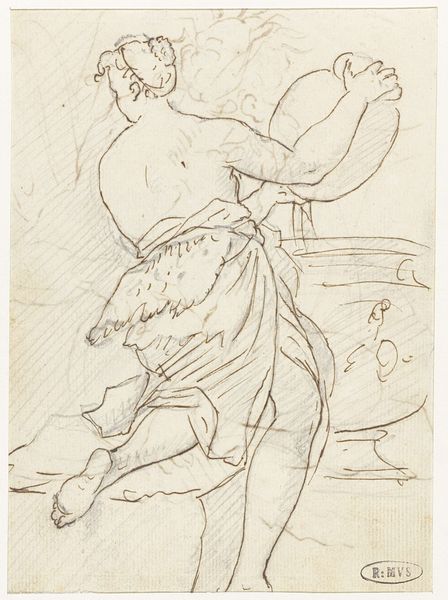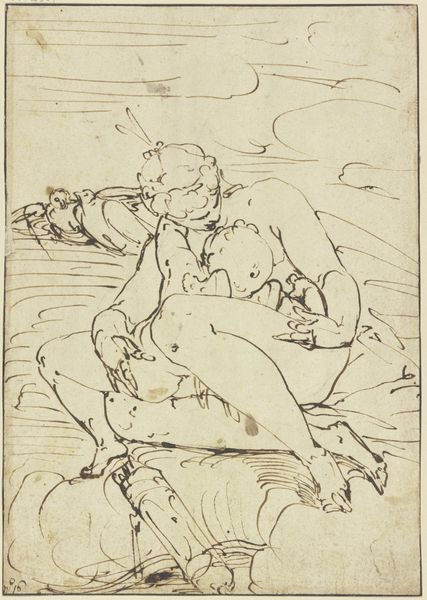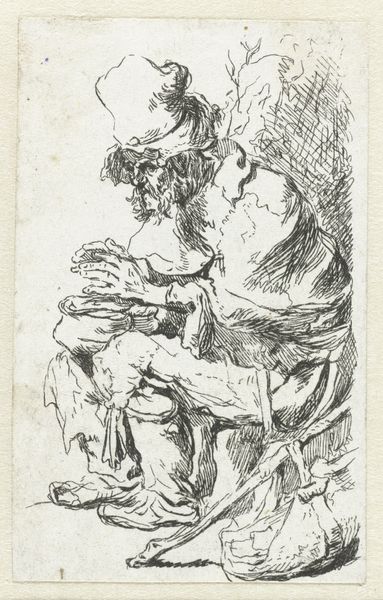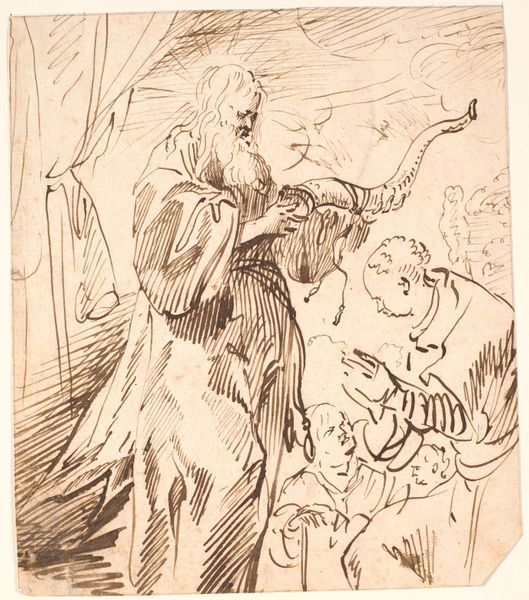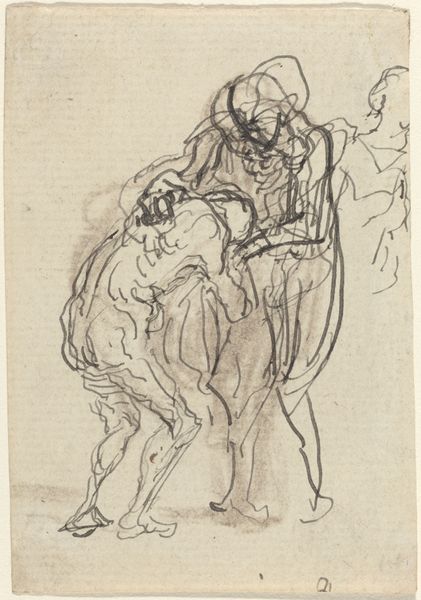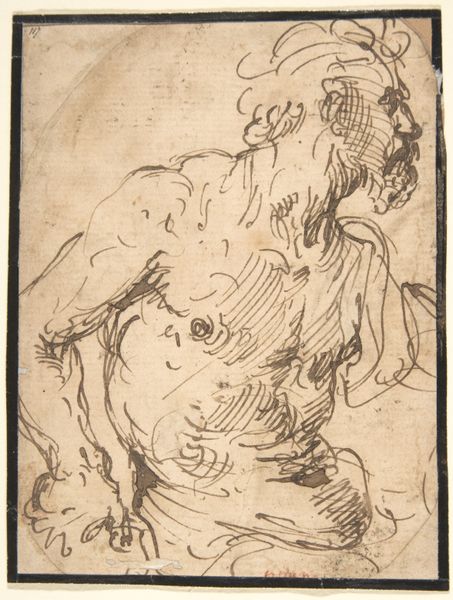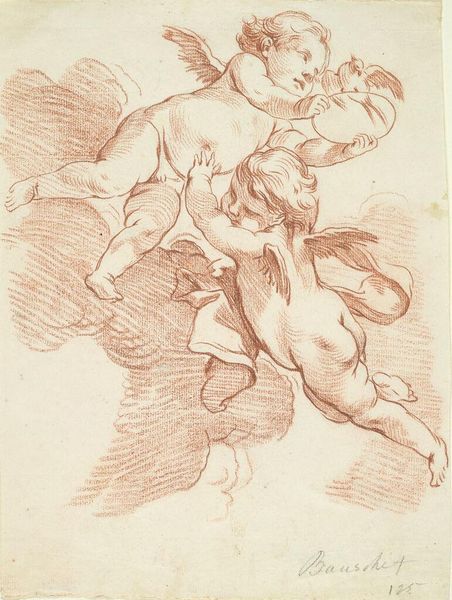
drawing
#
drawing
#
toned paper
#
light pencil work
#
ink drawing
#
pen sketch
#
pencil sketch
#
personal sketchbook
#
ink drawing experimentation
#
pen-ink sketch
#
sketchbook drawing
#
sketchbook art
Dimensions: sheet: 36.8 × 23.5 cm (14 1/2 × 9 1/4 in.)
Copyright: National Gallery of Art: CC0 1.0
Editor: So, this is Luca Cambiaso’s "A Standing Sibyl with a Scroll," created around the mid-1550s. It's a drawing, presumably ink, on toned paper. I'm struck by the dynamism of the figure, she looks almost windswept or in the middle of prophesying something momentous. What can you tell me about this piece? Curator: That dynamism is key, especially when we consider the context of 16th-century Europe, a period of religious and intellectual upheaval. Sibyls, in Renaissance art, often represented a bridge between the classical world and Christian prophecy, offering perspectives rooted outside patriarchal, monotheistic structures. Do you see how her stance, almost off-balance, and the swirling lines contribute to a sense of unease or even resistance? Editor: Yes, it’s almost like she's struggling against something unseen. The sketch-like quality makes her feel very alive, not static like a sculpture. Is the scroll significant? Curator: Absolutely. The scroll is her voice, her power. Think about who had access to the written word then. By presenting a woman, particularly a Sibyl associated with pagan traditions, with a scroll, Cambiaso challenges the era's limited notions of female authority and spiritual insight. The ink, the rapidly sketched lines... they all contribute to a sense of urgency. Editor: So, it's a subversive image, in a way? Empowering a woman with knowledge and a voice in a time when both were heavily restricted? Curator: Precisely. The apparent “sketchiness” further empowers her, moving away from the strict confines and rigidity of Renaissance art. And because she has wings, Cambiaso links her to pagan gods and deities while also hinting at Christian angelhood, which places her in a complicated intersection. Consider, too, the materiality: the drawing medium itself is immediate, raw, and perhaps served as a more accessible mode of expression outside the established artistic structures. It is the beginning of a conversation. Editor: I hadn't considered how the choice of drawing contributes to the meaning. I guess I was too focused on the subject matter alone. Thanks, that's given me a lot to think about! Curator: Indeed, Cambiaso, through his unique presentation of a female form as a herald, questions societal roles and artistic expression through the visual rhetoric.
Comments
No comments
Be the first to comment and join the conversation on the ultimate creative platform.
